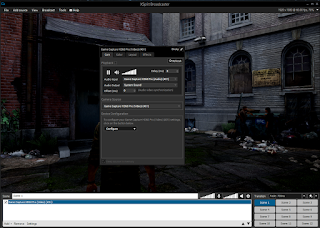So what exactly is the HD60 S? Well to put it in simple terms, it's an external Elgato HD60 Pro that I recently reviewed. It's really great for the laptop market or for those who own a desktop but don't want to fiddle about with internal installation.
The build quality feels really nice and what you would expect from Elgato. It's slightly smaller than the original Game Capture HD design and seems equal to the original HD60.
System Requirements
I want to quickly discuss the official system requirements from Elgato as there are two main points I want to talk about.
PC: Windows 10 (64-bit)
4th generation quad‑core Intel Core i5 CPU (i5-4xxx or comparable)
Intel HD or NVIDIA GeForce 600 series graphics (or better)
4 GB RAM, built-in USB 3.0 port
Those are not particularly high specifications for most systems these days but they are still modest. The reason for this is the HD60 S does not feature an on board H.264 encoder like the HD60 Pro so the encoding is done on your system.
Some people might be confused about the OS compatibility. Windows 10 is preferred but it will also work fine on 8.1 and 7. In fact I was using 8.1 so don't feel like you need Windows 10 to use the card.
Software and video quality
The Game Capture software hasn't changed much from the HD60 Pro, solid and steady as ever with the HD60 S. It's just simple and easy to understand that will take you maybe 10 or 15 minutes to get the hang of.
One thing I found interesting is that they chose to change the maximum bit rate to 40Mbps when the Pro was 60. They probably did this due to on board encoding as discussed previously.
Like other Elgato cards, you are still stuck with YV12 (4:2:0) capture but this really doesn't mean much when most media you create is streamed in YV12 or converted to YV12 by YouTube anyway. If you really want YUY2 (4:2:2), you would need to look into using the DirectShow driver described below. Here is a 1080p60 40Mbps sample from the Elgato software for your viewing pleasure.
Although the card is basically made for 1080p60, they have not forgot about other common resolutions. The HD60 S officially supports 1080p60, 1080p30, 1080i, 720p60, 720p30, 576p, 576i and 480p.
One really cool change in the software since 3.10.65 has been the non splitting of .ts files once the file size hit 4GB. I should note that file splitting still occurs if you use flashback recording.
The HD60 S also has support for Elgato Sound Capture and you know how much I love that.
Drivers and OBS/XSplit Compatibility
Like the HD60 Pro, Elgato is supplying two drivers for the HD60 S. One is tailor made to add functionality on a product by product basis and the other is a run of the mill DirectShow driver that unlocks the YUY2 functionality as described above. I see no reason to use the DirectShow driver as the one they bundle with the Game Capture software will work with OBS and XSplit anyway. You would only really be missing out on AmaRecTV support.
As of writing, the HD60 S comes fully working with OBS using either driver. However, XSplit will require an update to be used with the non DirectShow driver. If you require immediate access to the HD60 S in XSplit, I recommend you install the DirectShow driver by clicking here. I'll update this when XSplit has rolled out support for it.
 |
| Click to enlarge |
USB3 Bandwidth and Preview Latency
The HD60 S seems to be using the CY3014 USB3 chipset and I'm glad they did. It has shown how stable it is at processing 1080p60 video on other cards using the same chipset (XCAPTURE-1 and the USB3HDCAP). It was a good decision to keep it and not go down the road of other devices plagued by issues such as the Intensity Shuttle.
Due to this, preview latency is kept as low as most internal cards. For my Asus laptop, it seems to be always 2 frames and should be fine to play from. Of course this number depends on your system so it might be 3-4 frames on slower systems or closer to 1 on high end rigs. You definitely won't need to fiddle with microphone offset that's for sure.
Conclusions
A shorter review than normal but that's my style with reviews. I want to give a quick description of the product and then highlight any key points or things I think need improved. The fact this review is short shows how good the card is. If you do consider buying this, you are getting exactly what you pay for. A USB3 external card capable of easily capturing 1080p60 video and anything in between.















